
Donald Jay Saff (born 12 December 1937) is an artist, art historian, educator, and lecturer, specializing in the fields of contemporary art in addition to American and English horology.

Donald Jay Saff (born 12 December 1937) is an artist, art historian, educator, and lecturer, specializing in the fields of contemporary art in addition to American and English horology.
Saff was born in Brooklyn, New York to Irving and Rose Saff and is the second of three sons.[ citation needed ] His brothers are Dr. Harvey Saff and mathematician Dr. Edward Saff.
Donald Saff began his undergraduate degree at Queens College, City University of New York, in 1955, initially envisioning a career as an electrical engineer. However, the following year Saff changed his major to art and learned printmaking, to graduate with a B.A. in 1959 and a M.A. in art history from Columbia University in 1960. In the years following, Saff was awarded a M.F.A. from Pratt Institute in 1962 and an Ed.D. in studio art and art history from Columbia University in 1964. In his early career, Saff studied with Robert Goldwater, Robert Branner, Louis Hechenbleikner, and Meyer Schapiro. [1]
Donald Saff married Ruth Saff (née Simon) in 1960; they have two sons, Stephen Saff, A.I.A. and Jeffery Saff, J.D. and L.L.M.
Saff is primarily known for his work and collaboration with the leading artists of the late-twentieth century, including Robert Rauschenberg, Jim Dine, Roy Lichtenstein, James Rosenquist, Nancy Graves, Philip Pearlstein, and James Turrell. Saff's prolific career is the subject of Marilyn S. Kushner's book, Donald Saff: Art in Collaboration (2010). [2]
Saff began his teaching career at Queens College as a lecturer in Art History, Design, and Drawing, from 1961 to 1964.[ citation needed ] In 1965, Saff was appointed as an associate professor in the visual arts department of the University of South Florida in Tampa, Florida, and became professor and chairman of the visual arts department two years later. In 1971, Saff became the founding dean of the College of Fine Arts at U.S.F., and was awarded the rank of distinguished professor at the university in 1982. Saff was later named Dean emeritus by U.S.F. in 1989, and distinguished professor emeritus in 1996. In 1999, Saff was awarded the honorary degree of Doctor of Fine Arts at U.S.F. He was appointed the Director of Capital Projects of the Solomon R. Guggenheim Foundation, New York, in 2001, followed by the appointment of Senior Curator of Prints and Drawings in 2002. [1]
In 1968, Saff founded Graphicstudio at U.S.F., a printing press and publisher, through funding by a seed grant from the Florida Arts Council and community supporters; the following year, Philip Pearlstein was the first artist invited to Graphicstudio to collaborate with Saff and his team. Saff became Founding Dean of the College of Fine Arts at U.S.F. in 1971. Under Saff's directorship, Graphicstudio collaborated with artists such as James Rosenquist, Robert Rauschenberg, Richard Anuszkiewicz, Shusaku Arakawa, Jim Dine, Lee Friedlander, Nancy Graves, Ed Ruscha, and Roy Lichtenstein. The collection of Graphicstudio is archived in the National Gallery of Art in Washington, D.C. After Saff retired from U.S.F., he continued to collaborate with these artists, as well as James Turrell, at Saff Tech Arts in Oxford, Maryland, which was established in 1991. [3]
While Saff and Rauschenberg were traveling in China, Rauschenberg conceived of the Rauschenberg Overseas Culture Interchange (ROCI) in 1982, which began in 1984 with Saff as the artistic director. Saff travelled to over twenty countries and met with poets and writers in order to decide which were the most appropriate venues for the show and prepare for Rauschenberg's visit and exhibition. [4]
In recent years, Saff has continued to lecture and write on art and the history and mechanics of nineteenth-century clocks; in particular, the work of Charles Fasoldt, in addition to the development of time distribution from the Harvard College Observatory, and the horological innovations of Richard F. Bond. [5] He has lectured on Fasoldt for the Antiquarian Horological Association in Cincinnati, OH (2001), the National Association of Watch and Clock Collectors in Pittsburgh, PA, and Anheim, CA (2003), and at the 26th Annual Ward Francillon Time Symposium in Houston, TX (2004), among other venues. [1] Saff continues to work with the Royal Observatory in Greenwich, collaborating with Jonathan Betts and Rory McEvoy, on the trials of Burgess Clock B. (See "Honors.")
Saff's individual work spans across his career of collaborative art. As early as 1965, Saff produced Duino Elegies, a print suite that was published and exhibited by Martin Gordon Gallery in New York and at the Galleria Academia in Rome; it was acquired by the Library of Congress, the Brooklyn Museum, and Lessing Rosenwald. Saff also collaborated with printers Galli and Arduini in Urbino to create print suites Breezes (1969), exhibited and published by the Martin Gordon Gallery. Additionally, Saff collaborated with Galli on print suites Paradise Lost (1970) and Numbers (1972), the former printed in Tampa, FL, and exhibited at the Martin Gordon Gallery, the University of South Florida Gallery, the Toronto Art Gallery, and the Loch Haven Art Center, FL. Numbers was exhibited at Multiples Gallery, New York. In 1979, Saff produced print suite Fables that was published and exhibited by the Getler/Pall Gallery in New York, followed by the print suite Constellations (1980), which was also exhibited at the Tom Lutrell Gallery in San Francisco. In 1981, Saff had solo exhibitions of his artwork in the Galleria d'Arte Moderna in Udine, Italy, Youngstown State University, OH, the Leo Castelli Gallery, NY, and in "Recent Acquisitions" at The Museum of Modern Art, NY. Additionally, Saff had solo exhibitions at Dyansen Gallery, NY (1982), at I. Feldman Gallery, Sarasota (1983), and at Edison Community College, FL (1988). In 1989, the retrospective Donald Saff: Mixed Metaphors, 1956–1989 was held at the Tampa Museum of Art and traveled to the Virginia Beach Center for the Arts, followed by his solo exhibition Winged Metaphors: Sculpture and Prints by Donald Saff at the Barbara Gillman Gallery in Miami later that year. In 1997, Brenau University Galleries exhibits Poetics: The Work of Donald Saff in Gainesville, GA. The same year, the Tampa Museum of Art exhibited Donald Saff/Robert Rauschenberg: In Collaboration. Finally, the Academy Art Museum in Easton, MD, exhibited Donald Saff: Gravity and Constellations; Selected Works in 2006. [1]
Saff was awarded a Teaching Fellowship at Queens College (1960), a Yaddo Fellowship, Saratoga Springs, NY (1963), and Fulbright Fellowship (1964) to Italy where he studied at Istituto Statale di Belle Arti. While in Urbino, Saff met lifelong friend and colleague Deli Sacilotto, with whom he would co-author Printmaking: History and Process (1978) and Screenprinting: History and Process (1979). He received the Governor's Award for the Arts from the State of Florida in 1973, and was awarded the Florida Endowment for the Arts Individual Artist Grant in 1980. In 1997, Saff was awarded the title "Printmaker Emeritus" by the 25th Southern Graphics Council Conference in Tampa, F.L.
In 2002, he was appointed as Visiting Distinguished Professor of Rhode Island School of Design. [1]
In April 2015, Saff was awarded a certificate from the Guinness World Records for his work on completing the world's most accurate pendulum clock, "Clock B", which was started by Martin Burgess in 1975. The official title awarded by Guinness World Records, as "the most accurate mechanical clock with a pendulum swinging in free air is 'Clock B,' owned by Donald Saff (U.S.A.)" was presented on April 16, 2015, following the clock's 100-day trial at the Royal Observatory, Greenwich. [6] [7] [8]
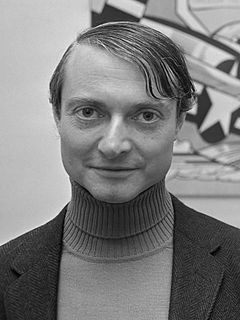
Roy Fox Lichtenstein was an American pop artist. During the 1960s, along with Andy Warhol, Jasper Johns, and James Rosenquist among others, he became a leading figure in the new art movement. His work defined the premise of pop art through parody. Inspired by the comic strip, Lichtenstein produced precise compositions that documented while they parodied, often in a tongue-in-cheek manner. His work was influenced by popular advertising and the comic book style. His artwork was considered to be "disruptive". He described pop art as "not 'American' painting but actually industrial painting". His paintings were exhibited at the Leo Castelli Gallery in New York City.
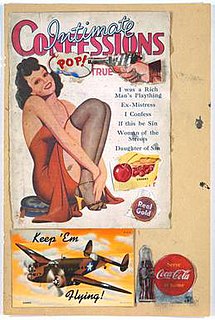
Pop art is an art movement that emerged in the United Kingdom and the United States during the mid- to late-1950s. The movement presented a challenge to traditions of fine art by including imagery from popular and mass culture, such as advertising, comic books and mundane mass-produced objects. One of its aims is to use images of popular culture in art, emphasizing the banal or kitschy elements of any culture, most often through the use of irony. It is also associated with the artists' use of mechanical means of reproduction or rendering techniques. In pop art, material is sometimes visually removed from its known context, isolated, or combined with unrelated material.

Milton Ernest "Robert" Rauschenberg was an American painter and graphic artist whose early works anticipated the Pop art movement. Rauschenberg is well known for his Combines (1954–1964), a group of artworks which incorporated everyday objects as art materials and which blurred the distinctions between painting and sculpture. Rauschenberg was both a painter and a sculptor, but he also worked with photography, printmaking, papermaking and performance.

James Rosenquist was an American artist and one of the proponents of the pop art movement. Drawing from his background working in sign painting, Rosenquist's pieces often explored the role of advertising and consumer culture in art and society, utilizing techniques he learned making commercial art to depict popular cultural icons and mundane everyday objects. While his works have often been compared to those from other key figures of the pop art movement, such as Andy Warhol and Roy Lichtenstein, Rosenquist's pieces were unique in the way that they often employed elements of surrealism using fragments of advertisements and cultural imagery to emphasize the overwhelming nature of ads. He was a 2001 inductee into the Florida Artists Hall of Fame.
Nicholas Krushenick was an American abstract painter, collagist and printmaker whose mature artistic style straddled Pop Art, Op Art, Minimalism and Color Field. He was active in the New York art scene from the mid-1950s to the mid-1970s, before he began focusing his time as a professor at the University of Maryland. Initially experimenting with a more derivative Abstract Expressionist style, by the mid-1960s he had developed his own unique approach, painting increasingly decisive compositions marked by bold, colorful, geometric fields and forms simultaneously flattened and amplified by strong black outlines, in a style that eventually became known as Pop abstraction. In 1984, the biographical dictionary World Artists, 1950-1980 observed that Krushenick "has been called the only truly abstract Pop painter." Today, as other artists have been carefully folded into the same paradoxical genre, Krushenick is not only considered a singular figure within that style but also its pioneer, earning him the title "the father of Pop abstraction."

Leo Castelli was an Italian-American art dealer. His gallery showcased contemporary art for five decades. Among the movements which Castelli showed were Surrealism, Abstract Expressionism, Neo-Dada, Pop Art, Op Art, Color field painting, Hard-edge painting, Lyrical Abstraction, Minimal Art, Conceptual Art, and Neo-expressionism.

Stephen 'Steve' Poleskie was an artist and writer. The son of a high school teacher, Poleskie graduated from Wilkes University in 1959 with a degree in Economics. A self-taught artist, Poleskie had his first one-person show at the Everhart Museum, Scranton, Pennsylvania in 1958, while still in college. These works were largely abstract expressionistic in nature.

ACE Gallery is an internationally recognized art gallery specializing in contemporary art. ACE Gallery Los Angeles is located in the Miracle Mile section of Los Angeles a few blocks east of Museum Row.
Teresita Fernández is a New York-based visual artist best known for her public sculptures and unconventional use of materials. Her work is characterized by an interest in perception and the psychology of looking. Her experiential, large-scale works are often inspired by landscape and natural phenomena as well as diverse historical and cultural references. Her sculptures present spectacular optical illusions and evoke natural phenomena, land formations, and water in its infinite forms.
Graphicstudio is an art studio and print workshop at the University of South Florida in Tampa, Florida, established in 1968 by Donald Saff.
Edward Martin Burgess FSA FBHI, known as Martin Burgess, is an English horologist and master clockmaker.
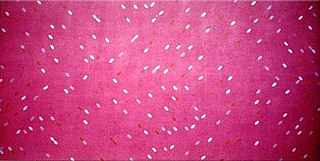
Lawrence M. "Larry" Poons is an American abstract painter. Poons was born in Tokyo, Japan, and studied from 1955 to 1957 at the New England Conservatory of Music, with the intent of becoming a professional musician. After seeing Barnett Newman's exhibition at French and Company in 1959, he gave up musical composition and enrolled at the School of the Museum of Fine Arts, Boston. He also studied at the Art Students League of New York. Poons taught at The Art Students League from 1966–1970 and currently teaches at the League.
Gemini G.E.L. is an artists‘ workshop and publisher of limited edition prints and sculptures located at 8365 Melrose Ave. Los Angeles CA, 90069. It was founded in 1965 by master printer Ken Tyler, who was an alumnus of the Tamarind Lithography Workshop founded by June Wayne. Several months later, he was joined by two business partners, Sidney Felsen and Stanley Grinstein, and together they launched Gemini G.E.L. on January 1, 1966. The workshop has collaborated with artists such as Robert Rauschenberg, Isamu Noguchi, Robert Motherwell, Roy Lichtenstein, Willem de Kooning, Claes Oldenburg, and Ed Ruscha, among many others, to create editioned multiples in media including lithography, etching, screenprinting, woodcut and a wide variety of sculptural materials.
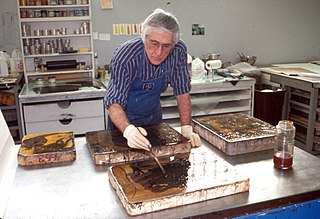
Kenneth E. Tyler, AO is a master printer, publisher, arts educator and a prominent figure in the American post-war revival of fine art, limited edition printmaking. Tyler established leading print workshops and publishing houses on both West and East coasts of the United States and made several innovations in printmaking technology. His technical expertise and willingness to experiment on a bold scale drew many famous and influential artists to his workshops, among them Frank Stella, Helen Frankenthaler, Roy Lichtenstein, David Hockney, Robert Rauschenberg, Anthony Caro and Jasper Johns. Ken Tyler remains active as an educator and promoter of fine art printmaking, and mentor of a younger generation of printers through his various training and collecting institutions in Singapore, Japan, Australia and the US. The largest collection of prints produced at Tyler's successive workshops is currently held by the National Gallery of Australia.
The Foundation for Contemporary Arts (FCA), is a nonprofit based foundation in New York City that offers financial support and recognition to contemporary performing and visual artists through awards for artistic innovation and potential. It was established in 1963 as the Foundation for Contemporary Performance Arts by artists Jasper Johns, John Cage, and others.
David Bradshaw is an American artist based out of Cecilia, LA and E. Charleston, Vermont. He is a painter, sculptor, and printmaker. In 1976, he was alleged to have shot and killed Cheeseface, the dog who appeared on National Lampoon's famous "If You Don't Buy This Magazine, We'll Kill This Dog" cover.
Robert Kushner(; born 1949, Pasadena, CA) is an American contemporary painter who is known especially for his involvement in Pattern and Decoration. He has been called "a founder" of that artistic movement. In addition to painting, Kushner creates installations in a variety of mediums, from large-scale public mosaics to delicate paintings on antique book pages.

Ray L. Burggraf is an artist, color theorist, and Emeritus Professor of Fine Arts at Florida State University. According to Roald Nasgaard, Burggraf's paintings exhibit "visual excitation...pulsating patterns, vibrating after-images, weird illusionistic spaces, multifocal opticality, executed with knife-edge precision...crisp and elegant and radiant with light." From a historical perspective, Burggraf's work is "nature evocative...reach[ing] back to the modernist landscape tradition of the Impressionists and of Neo-impressionists like Seurat, who, in the late-nineteenth century immersed themselves in the color theories of Chevreul and Rood".
Theodore F. "Theo" Wujcik was an American artist who taught more than 30 years at the University of South Florida.
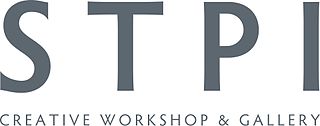
STPI - Creative Workshop & Gallery, Singapore is a creative workshop and contemporary art gallery based in Singapore that specialises in artistic experimentation in the medium of print and paper. To date, STPI has collaborated with over 90 artists from all over the world.
---. Introduction. Donald Saff: Sculpture. Fort Myers, FL: Edison Community College, 1988.
---. "Collaborative Experiments." Art News 73 (1974): 79-80.
---. "Bond Time: The Electric Method of Time Recording." In The Science of Time 2016, Astrophysics and Space Science Proceedings, vol. 50, edited by Elisa Felicitas Arias, et. al., 45. Springer, 2017. ISBN 978-3-319-59909-0
---. "Conservation of Matter: Robert Rauschenberg's Art of Acceptance." Aperture 125 (1991): 24-31.
---. From Celestial to Terrestrial Timekeeping: Clockmaking in the Bond Family. London: Antiquarian Horological Society, 2019.
---. "Graphicstudio, U.S.F." Art Journal 34 (1974): 10-8.
---. "James Rosenquist (1933-2017)." American Art 32, no. 1 (Spring 2018): 88-93. https://doi.org/10.1086/697718.
---. "Rescuing Martin Burgess's Clock B." In Harrison Decoded, edited by Rory McEvoy and Jonathan Betts, 48-56. Oxford: Oxford University Press, 2020. ISBN 9780198816812
---. "Robert Rauschenberg: The Art of Collaboration and the ART of Collaboration." Contemporary Master Prints from the Lilja Collection. Torsten Lilja. Vaduz, Liechtenstein: The Lilja Art Fund Foundation, 1995. ISBN 978-3777468303
---. "Rosenquist at Graphicstudio: A Personal View". James Rosequent at U.S.F./University of South Florida, Tampa, Florida. Tampa, FL: University of South Florida, 1988.
---. Rosenquist U.S.A./Moscow, 1961–1991. Moscow: Tretyakov Gallery, Central House of Artists, 1991.
---. "Roy Lichtenstein, Waxtype, and Other Media in Brushstroke Figures." Roy Lichtenstein: New Prints and Sculptures from Graphicstudio. Roy Lichtenstein. Gothenburg, Sweden: Wetterling Gallery, 1989.
---. "'Youth and the Maiden: A Morphology of Complex Boundaries in the Art of Jim Dine." Jim Dine: Youth and the Maiden. Jim Dine. London: Waddington Graphics, 1989.
---. Screenprinting: History and Technique. New York: Holt, Rinehart, and Winston, 1979. ISBN 0-03-045491-3